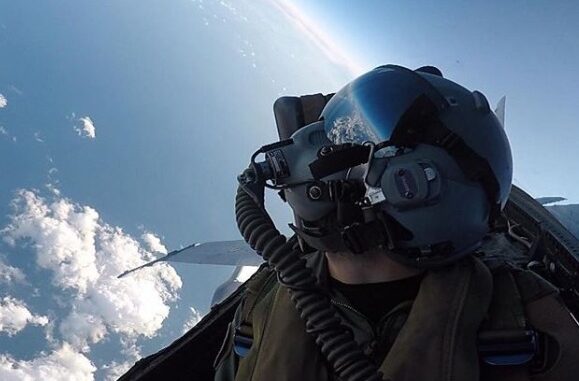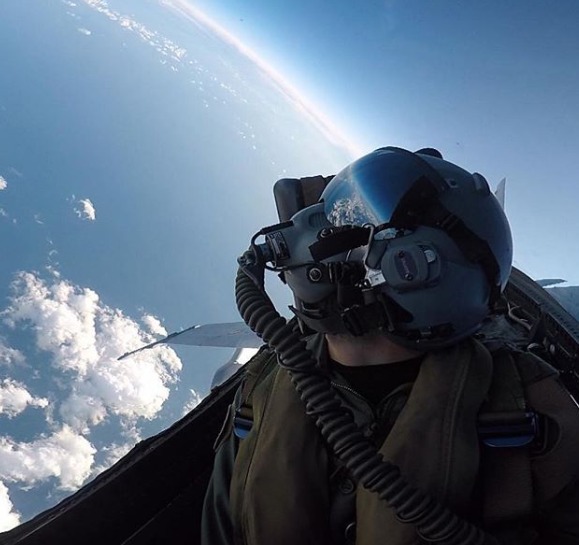
How fighter pilots adapt their tactics to modern air defenses (S-400, HQ-9B). Training in the US, Russia, China, France, and the UK.
Summary
Enemy air defenses are evolving rapidly: multiband radars, long-range surface-to-air missiles, and integrated command networks. To survive and strike, fighter pilots now combine stealth, electronic warfare, decoy drones, and stand-off weapons. US forces are promoting Agile Combat Employment, increasing the number of Red Flag exercises and integrating the latest anti-radar missiles. Russia maintains a doctrine of dense integration (S-400, Buk, Tor) and uses anti-radar missiles such as the Kh-31P. China is modernizing its training (Golden Helmet, Red Sword) and deploying HQ-9B and HQ-22. In Europe, the French Air and Space Force is relying on Rafale and SPECTRA, while the RAF is relying on Typhoon, Praetorian eVo, and SPEAR 3. In practical terms, missions are planned in very short loops: detect, decoy, saturate, neutralize, then exit the lethal envelope. AI and sensor fusion improve decision-making. Tomorrow, collaborative combat with escort drones and smart munitions will further complicate the life of enemy radars.
The challenge posed by modern air defenses
Pilots face “layered” systems (IADS) capable of detecting, identifying, engaging, and then relocating in a matter of minutes. At the top, long-range systems close the sky at over 300 km. The S-400 “Triumf” claims a maximum range of 400 km with the 40N6E missile, depending on radar architecture and target profile. At the medium range, China deploys HQ-9B (approximately 200–300 km depending on the version) and HQ-22 (approximately 170 km), extending a no-fly zone for fighters, tankers, and ISR. These figures do not tell the whole story: altitude, radar cross-section, electromagnetic environment, and approach geometry all modulate the lethal envelope. The lower layers, such as Pantsir-S1 (20–30 km) or Tor-M2 (up to ~16 km), protect major batteries against cruise missiles, loitering munitions, and drones, while forcing fighters to stay high and far away. In this scenario, the adversary can play “radar off” and only illuminate at the right moment to break the enemy’s targeting chain. The consequence is clear: flying straight towards the target is no longer an option. Routes become winding, altitudes variable, radio emissions strictly controlled, and access to the theater depends on the ability to “break” the system, not just a site. Crews must therefore think in terms of ‘networks’ rather than “isolated batteries” and accept that the desired effect is achieved through saturation, synchronization, and deception as much as through explosion.
Adapting tactics: from stand-off to maneuvered stand-in
First rule: reduce exposure. Forces are increasing the number of “stand-off” strikes to hit outside the envelope of SA-20/21 and HQ-9B. The US is using JASSM-ER missiles, with publicly stated ranges of around 925 km, to target C2 centers, surveillance radars, and depots, while fighters keep their distance. To “open” a corridor, the SEAD/DEAD option once again becomes central: anti-radar missiles, decoy drones, and coordinated jamming. The American AARGM-ER anti-radar missile, declared serviceable by the US Navy in 2024, adds range and kinematics, allowing it to be fired from further away and higher up, making interception by SHORAD more difficult. Upstream, formations release MALD-J to saturate and deceive radars: these decoys/decoys-jammers mimic the trajectories and signatures of fighters and can fly over 900 km, forcing the adversary to “shoot” and reveal themselves. At the other end of the spectrum, the “stand-in” appears with stealth platforms or expendable drones that approach to wage electronic warfare at very close range, where geometry makes jamming more effective and location more difficult. Europe is following suit: the United Kingdom is banking on SPEAR 3 (range > 140 km) and SPEAR-EW for remote jamming; France is capitalizing on the Rafale/SCALP combination, SPECTRA, and the coordinated use of AASM munitions for low-high-low profiles with a low signature. Implicitly, one principle dominates: combining offset trajectories, tight “time windows,” and non-kinetic effects to tip the balance before the munitions enter.
The ISR-EW-kinetic loop: detect, deceive, strike, survive
The heart of the adaptation lies in the information loop. Latest-generation fighters merge AESA radar, IRST, ESM, and data link data to generate a reliable track in a very short window. This AI and sensor fusion feeds into up-to-date threat libraries, automatically triggering the best mode of self-protection: DRFM jamming, active decoys, chaff, or terrain-hiding maneuvers. Kill chains become modal: “sense-make-decide-act,” with each link optimized for time and angle. Pilots plan approach axes that force acquisition radars to reveal themselves, while 4th and 5th generations cooperate: an F-35 can “push” a track via MADL/Link-16, a Typhoon or Rafale performs the “out-of-stand-off” engagement. MALD-J decoys create false packets, SEAD/DEAD initiate the breach, and cruise missiles finish the job. Agile Combat Employment (Agile Combat Employment) finally imposes a dispersed logistical rhythm: light forward bases, minimal supply columns, and reduced teams to limit vulnerability to ballistic and cruise strikes. This dispersion increases transit times but reduces the predictability of sortie cycles. In this scenario, “emissions management” (EMCON) becomes an art: emitting little, wisely, to remain below detection thresholds, and accepting uncertainty by relying on sensor redundancy and cross-platform collaboration.

American methods: Red Flag, Weapons School, and multi-domain employment
In the United States, tactical adaptation is first seen in training. Every year, Red Flag brings together thousands of personnel and dozens of units, with realistic IADS scenarios, including jamming, cyber, and mobile threats. In 2024, one iteration brought together around 1,500 participants, a sign of the massification of realism and joint forces. At Nellis, the USAF Weapons School produces around 100 “patch-wearers” every six months who are capable of designing, conducting, and debriefing complex missions against IADS, day and night, with an increasing focus on electronic warfare and the desynchronization of enemy defenses. The JADO/JADC2 doctrine connects sensors and shooters: AWACS, Rivet Joint, F-35, EA-18G, Patriot and HIMARS batteries can share and act on the same track in a short time frame. In operations, forces combine AARGM-ER to “degrade” radars, JASSM-ER for C2 nodes and stocks, and MALD-J decoy drones to stimulate the adversary. Agile Combat Employment disperses F-16s and F-35s on “spokes” a few hundred kilometers from targets, refueled in short slots to remain below the threshold of a missile salvo. This employment grammar, validated in large-scale maneuvers, reveals a truth: survivability no longer comes from a single “asset,” but from the coherent stacking of small advantages—sensors, ammunition, deception—executed with rigor.
Russian and Chinese methods: IADS doctrine and crew modernization
Russia, heir to an IADS culture, trains its crews at the Lipetsk center and relies on a proven anti-radar range. The Su-34 and Su-30 can carry Kh-31P (up to ~110–160 km depending on the version) and Kh-58UShK (up to ~245 km), combining anti-radar fire and saturation with rockets and drones to force the defense to reveal itself before a precision strike. Strategic exercises (Zapad, Kavkaz) incorporate radar “blink” scenarios, rapid battery relocations, and the joint use of ground-based electronic warfare. This approach favors density and redundancy over stealth, accepting losses but hardening the bubble. In China, the PLAAF is modernizing its training. The Golden Helmet competition, launched in 2011, has drawn crews into unscripted “free” combat. The Red Sword exercise in Dingxin juxtaposes air defense, jamming, and air-to-air combat to accustom pilots to combined threats. On the systems side, HQ-9B and HQ-22 extend the interdiction zone, while activity around Taiwan has served as a large-scale laboratory for sensor-shooter coordination. While Russian and Chinese forces are converging on more modern standards, their strength lies primarily in the stacking of SAM layers and mobility. Faced with them, opposing pilots do not “win” the skies; they “rent” temporary corridors through deception and remote strikes.
French and British methods: SPECTRA, Praetorian eVo, and collaborative effects
The French Air and Space Force is coordinating its adaptation around the Rafale and the Center for Military Air Expertise (CEAM). SPECTRA combines broadband detection, angular localization, active jamming, and decoys with integrated decision-making logic. In joint exercises, crews use this suite to open “low noise” axes to mixed packages, then launch AASM and SCALP-EG from secure profiles. National campaigns (such as VOLFA, large-scale maneuvers) validate sequences with A330 Phénix tankers and situation sharing via data links, to optimize “on-station” times while remaining outside enemy domes. In the United Kingdom, the RAF bases its tactics on the Typhoon and F-35B. The rise of the Praetorian eVo increases survivability and paves the way for the integration of SPEAR-EW; SPEAR 3 (> 140 km) adds depth to the attack on mobile systems. The QWI curriculum, with the Cobra Warrior capstone, certifies tactical leaders capable of synchronizing jamming, decoys, SEAD, and precision strikes on realistic “red” IADS. In both countries, the next step is collaborative combat: “loyal wingman” drones, connected munitions, and “remote carriers” to deploy sensors and effects. Here again, the key is not a technological miracle, but the alignment between demanding training, credible electronic warfare suites, and munitions adapted to the threat.
Concrete tactics in mission: recipes that work
A typical robust anti-IADS scheme has four components. 1) Preparation: mapping emissions, time-sensitive targeting on C2 relays, and identifying logistical bottlenecks. Crews create 3- to 7-minute “windows” where multiple effects converge to prevent battery reconfiguration. 2) Deception: launch MALD-J in packages, with trajectories simulating waves of attack; add “cut-out” trajectories to deceive the enemy’s multi-sensor correlation; strict EMCON management to avoid “signing” the real axis. 3) Opening: SEAD/DEAD firing from outside the “MEZ” (Missile Engagement Zone) to force radars to illuminate, then exploitation of this illumination by anti-radar or proximity jamming. 4) Exploitation: stand-off engagement (JASSM-ER, SCALP-EG, SPEAR 3) on the remaining nodes, then exfiltration via a different axis before the enemy has “repaired” its detection. Altitudes vary from very low (terrain masking at < 60 m AGL) to medium/high to optimize weapon range. The important thing is to keep pressure on the enemy’s OODA loop and not to confuse “radar silence” with “neutralization.” A battery that is turned off is not destroyed; it is waiting. Professionalism means regaining the initiative at every turn—through information, not just explosives.
Operational consequences and blind spots to be corrected
This adaptation comes at a price. First in ammunition: an opening campaign against a dense IADS consumes dozens of decoys, anti-radar and cruise missiles for a single access cycle. Second, in training: repeating multi-effect sequences with different crews and technicians requires hundreds of hours of planning and debriefing, and relentless data discipline. Finally, in logistics: Agile Combat Employment disperses resources, but lengthens support lines and imposes rusticity on limited “spoke” bases. The blind spots? Dependence on data. Without up-to-date threat libraries, an electronic warfare suite quickly loses its relevance. Adversary jamming (GNSS, links, radar altimetry) is already putting military GPS and datalinks to the test. Another point: saturation by cheap drones. An IADS that “saves” its missiles by leaving the lower layer to autonomous SHORADs forces a rethinking of the allocation of effects, at the risk of “wasting” high-end ammunition. One last unfiltered observation: even when well executed, SEAD/DEAD does not offer immunity. Losses will occur, especially for non-stealth platforms if the enemy combines low-frequency radar, passive triangulation, and opportunistic firing. The job of a fighter pilot remains that of a professional who coldly calculates where to accept risk, and for how many seconds.
War Wings Daily is an independant magazine.